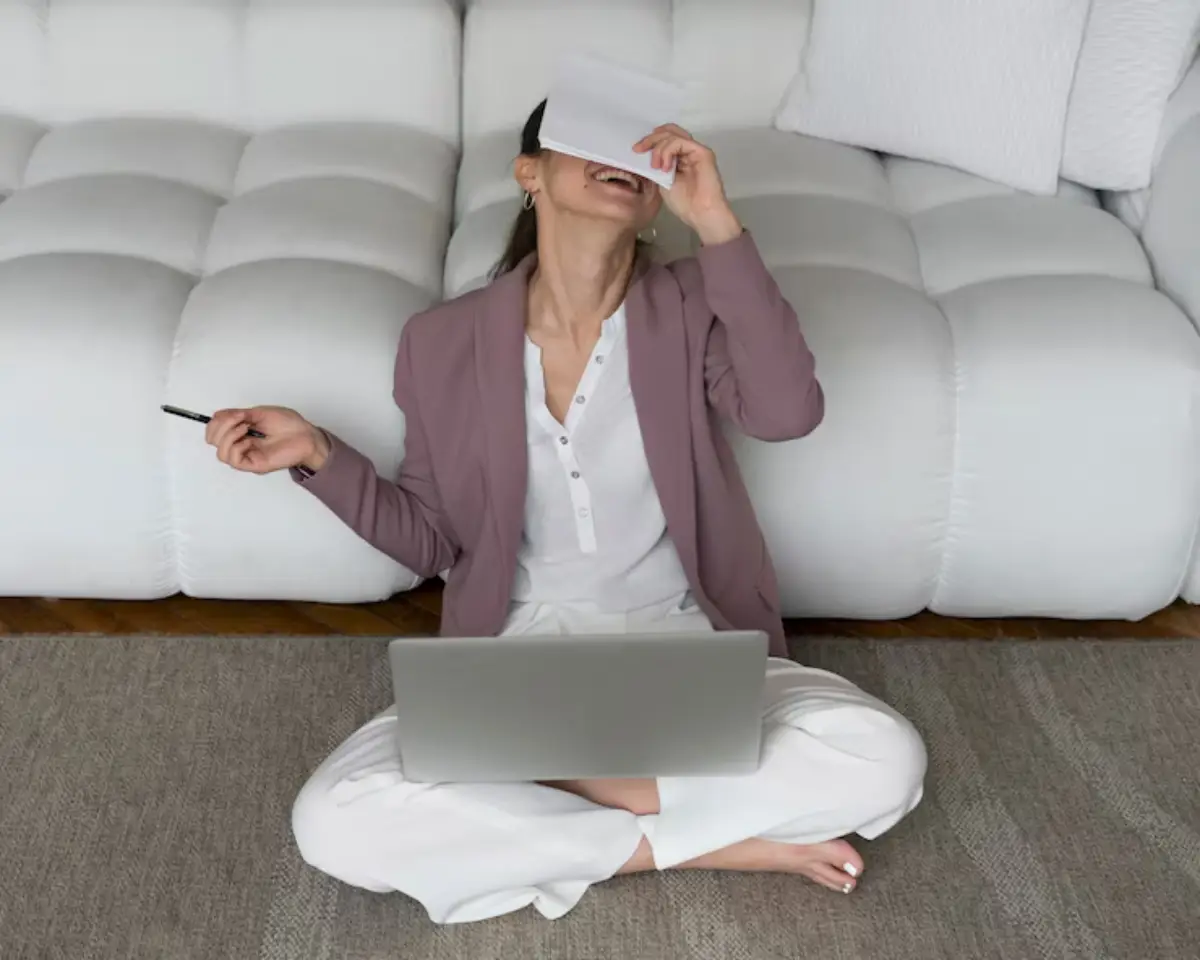
Digital Detox: Reconnecting with the Present Moment
Imagine this: you’re at the dinner table with loved ones, but half the faces glow blue from screens. Notifications buzz. Scrolls replace conversation. Sound familiar? You’re not alone. In a hyper-connected world, our devices offer convenience, entertainment, and instant answers — but they often come at the cost of real connection, restful minds, and meaningful presence.
Our screens are tools, but without boundaries, they easily take over. From the moment we wake up to when our heads hit the pillow, digital noise follows us. Over time, this constant stimulation can leave us feeling drained, distracted, and oddly disconnected — not just from others, but from ourselves.
That’s where a digital detox comes in — not as a strict tech ban or punishment, but as a conscious pause. A reset. A chance to tune back into the here and now. In this guide, we’ll explore what a digital detox looks like in real life, why it’s needed more than ever, and how small, sustainable changes can help you create a healthier relationship with technology. Whether you’re seeking more calm, better sleep, or deeper presence with your loved ones, it starts with one decision: to be here, now.
Why We Need a Digital Detox
The Rise of Screen Fatigue
The average adult spends over 6 hours a day on digital devices, often more for teenagers. Overexposure to screens contributes to:
- Eye strain and disrupted sleep
- Shortened attention span
- Increased anxiety and low mood
- Social disconnection
The Brain on Constant Stimulation
Smartphones are designed to keep you hooked. Notifications act like slot machines, delivering dopamine spikes that keep you reaching for the next swipe. Over time, this can lead to addictive behaviours and mental overload.
Disconnection in a Connected World
Ironically, while technology connects us globally, it can also leave us disconnected from the present moment, nature, and even those sitting next to us.
Digital Detox Benefits
1. Sharpened Focus and Mental Clarity
Reducing screen time helps your brain reset. Without constant pings and distractions, your attention span and productivity improve.
2. Better Sleep and Rest

Blue light from screens disrupts melatonin production. A detox restores natural sleep cycles, leading to deeper rest and refreshed mornings.
3. Emotional Well-being
Less screen exposure means fewer comparisons on social media, reducing anxiety and boosting self-esteem.
4. Stronger Real-Life Connections
Spending device-free time with loved ones enhances empathy, listening, and meaningful conversations.
5. Increased Mindfulness
When you’re not staring at a screen, you’re more likely to notice your surroundings, thoughts, and emotions — a key foundation of mindfulness practices.
Signs You Might Need a Digital Detox
- You reach for your phone first thing in the morning
- You feel anxious when your phone isn’t nearby
- You’re constantly multitasking across screens
- You scroll mindlessly and lose track of time
- You feel mentally drained or overwhelmed
If any of these resonate, it’s time to consider a digital reset.
How to Start a Digital Detox
1. Set Realistic Goals
Don’t aim for perfection. Begin with small steps:
- No phones during meals
- 30-minute screen-free mornings
- One device-free day per week
2. Use Tech to Tame Tech
Ironically, apps can help:
- Screen Time (Apple) and Digital Wellbeing (Android) for tracking use
- Forest app to stay focused by growing virtual trees
- Freedom or Focus Keeper to block distractions
3. Create Screen-Free Zones
Designate certain areas as tech-free:
- Bedroom (for better sleep)
- Dining table (for conversation)
- Bathroom (for hygiene and presence)
4. Replace Digital with Physical
Swap scrolling for real-world pleasures:
- Read a paperback book
- Journal your thoughts
- Go for a walk
- Try a hobby like painting or baking
5. Set Boundaries with Notifications
Disable non-essential alerts. Schedule specific times to check emails and social media.
Building a Mindful Digital Routine
Morning Rituals Without Screens
Start your day with intention:
- Stretching or yoga
- Breathwork or meditation
- Writing a gratitude list
Learn how to build calm into your workday in Creating a Holistic Morning Routine for Energy and Clarity .
Intentional Tech Use
Ask yourself:
- Why am I picking up this device?
- Is this enriching or draining me?
Bring awareness to each interaction.
Scheduled Screen Time
Instead of being reactive, be proactive. Allocate set times for work, social media, or news.
Digital Detox for Families and Children
Why It Matters for Kids
Excessive screen time affects:
- Cognitive development
- Attention span
- Social skills
Family-Friendly Detox Strategies
- Tech-free family dinners
- Screen-free Sundays
- Replace screen time with board games, nature walks, or storytelling
Involve children in creating screen-time rules so they feel empowered, not punished.
Workplace Boundaries and Digital Wellness
Combatting “Always On” Culture
Remote work and digital jobs blur the line between personal and professional time. Protect your energy by:
- Setting work hours and sticking to them
- Turning off work notifications after hours
- Scheduling breaks for movement and eye rest
Mindful Email Practices
- Don’t check emails during off-hours
- Use email scheduling tools
- Batch respond instead of reacting immediately
Real-Life Story: “My Weekend Without a Phone”
Lauren, 34, shares:
“I turned off my phone on Friday night and didn’t turn it back on until Sunday. At first, I was twitchy. I kept reaching for it. But by Saturday afternoon, I felt calm. I took a long walk, read for hours, and finally felt like I had space in my mind again. Now, I try to go offline one day each week.”
Long-Term Habits for Digital Well-being
Digital Decluttering
- Unfollow accounts that don’t inspire
- Delete unused apps
- Organise your home screen with intention
Regular Detox Check-ins
Reflect monthly: How do you feel about your tech use? What could shift?
Build a Supportive Environment
Encourage friends or colleagues to join you. Share your wins and struggles.
Conclusion: Press Pause to Reclaim the Present

The digital world isn’t going anywhere — and we don’t have to reject it. But when screen time begins to crowd out stillness, presence, and joy, it’s a sign to take a step back. A digital detox isn’t about guilt or perfection. It’s about reclaiming your attention, so you can spend it on what truly matters: shared laughter, quiet mornings, walks without Wi-Fi, and uninterrupted thoughts.
When you choose to step away from constant pings and scrolls, you open space for creativity, rest, and reconnection. You’ll notice the small things again — the sound of birds, the taste of your tea, the rhythm of your breath. Life becomes richer when you’re not just watching it through a screen.
So start where you are. Turn off notifications. Put your phone away at dinner. Go outside without a podcast in your ears. These tiny acts are powerful. With each one, you’re training your mind to be present, and presence is where peace begins.
Pause. Breathe. Unplug — even just for a little while. The real world is waiting, and it’s more beautiful than you remembered.
Liked this article? Then, discover the power of mindful choices in Incorporating Mindful Eating into Everyday Life for your and your family’s health.


